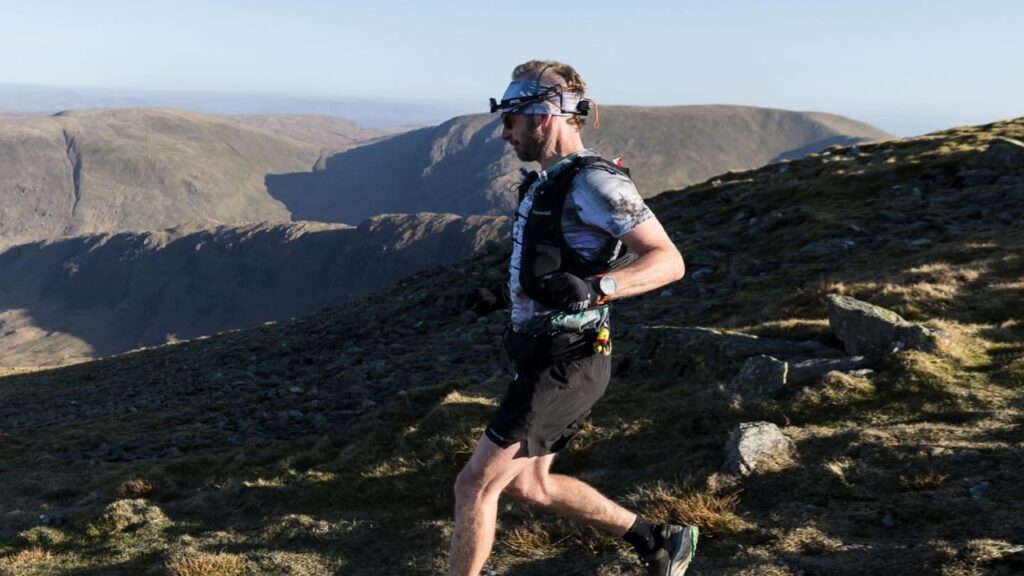In a testament to endurance and strategy, Damian Hall and Anna Llewellyn secured their victories at the Lakeland 100, a challenging 105-mile ultra-trail race that traverses the rugged terrain of the Lake District. Hall’s performance was particularly noteworthy, as he not only claimed the top spot in the men’s category but also finished first overall, a significant milestone he had aspired to for many years. His winning time of 19 hours and 33 minutes, while impressive, highlighted the gap to the course record of 18 hours and 45 minutes set by Mark Darbyshire the previous year.
The Lakeland 100 is known for its technical challenges, including approximately 6,300 meters of ascent, demanding both physical endurance and mental resolve. Hall had previously expressed his aspiration to conquer this iconic race, which has long been regarded as a pinnacle of domestic ultra-running in the UK. Despite a focus in prior years on other prestigious competitions like the Ultra-Trail du Mont-Blanc (UTMB) and Tor des Géants, Hall’s targeted preparation enabled him to approach the Lakeland 100 with the confidence of having the right tactics and fueling strategies at his disposal. This blend of experience and mental fortitude was critical as he navigated through various stages of the race, notably battling with competitors such as Jarlath McKenna and Ry Webb.
While Hall ultimately surged ahead, McKenna, who led early in the race, provides insights into the importance of race strategy and nutrition management. He faced significant gastrointestinal challenges around the 30-mile mark, which not only hindered his ability to sustain his lead but posed a real threat to finishing altogether. However, with the aid of his support crew, he was able to recalibrate and continue the race. This underscores the vital role that a well-prepared support system can play during long-distance races, where nutrition and morale can dramatically influence performance.
Midway through the race, Hall and Llewellyn, who had also been running together for portions of the event, showcased the significant tactical benefit of maintaining a measured pace. Llewellyn, who dominated the women’s category and finished sixth overall, was particularly strategic with her pacing. Having claimed the Fellsman title earlier in the year, her local knowledge and familiarity with the terrain likely provided her with a significant edge in preparation. Such insights reflect how prior experience on similar courses can influence a runner’s approach to pacing, allowing for sustainable performance throughout the event.
Webb, too, emerged as a critical competitor, temporarily leading until Hall executed a well-timed surge, reinforcing how important mid-race adjustments are in ultra-distance events. Runners should consider their pacing strategies carefully; Webb’s initial lead demonstrated the risk inherent in pushing too hard early on, while Hall’s later surge was timed with a careful assessment of his energy reserves—something that can be the differentiator in races of this nature.
Analyzing the overall results reveals further insights. The results showcased not just the top three finishers, but also the pacing strategies employed by those further down the ranks. For example, Neil MacNicol’s fourth place demonstrated that consistent pacing without dramatic fluctuations could yield respectable finishes as well. Conversely, Rory Harris managed to overtake Llewellyn in the final stages, indicating that tactical positioning heading into the final hours is crucial—possession of strength at the end of an ultra is as pivotal as having a solid start.
From a competitive standpoint, the women’s podium also signaled a wider trend in female participation and performance in ultra-running. With Llewellyn outperforming male competitors to secure an overall place in the top six, it emphasizes the evolution of the sport. Similarly, Charlotte Fisher and Sarah Page’s competitive finishing times highlight the growing depth of field among female competitors, compelling male runners to strategize differently than in previous eras.
For ultra-runners looking to enhance their own performance and race strategies, the Lakeland 100 imparts several critical takeaways. The necessity of sound nutrition planning cannot be overstated; the ability to adapt to one’s physiological responses can drastically impact finishing times. Furthermore, understanding course dynamics—specific technical sections where pacing might be more critical—can aid in ensuring that energy reserves are judiciously used. The route’s relentless ascent not only tests physical limits but also emphasizes the importance of mental resilience.
In summary, for ultra-runners preparing for mountain races, the recent performances at the Lakeland 100 serve as a reminder of how pivotal pacing, nutrition, and mental strategy are in achieving success over long distances. Every race presents unique challenges, yet, as demonstrated, those who can maneuver through early hiccups, maintain composure, and execute well-timed strategies are often the ones who emerge victorious. A realist takeaway for competitors is to integrate these strategic insights into their training and racing plans, ensuring they are prepared not just physically, but mentally for the experiences each mountain ultra presents.
